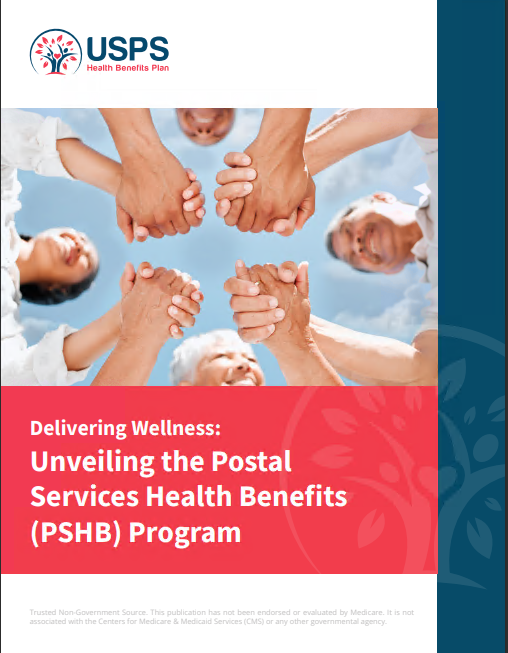Key Takeaways
- Retirees transitioning to the Postal Service Health Benefits (PSHB) program will need to adapt to new enrollment processes and plan structures.
- Understanding how the PSHB will interact with Medicare is crucial for retirees to optimize their healthcare coverage and avoid unnecessary costs.
The Important Changes Retirees Will Face When Moving to PSHB
As the U.S. Postal Service continues to evolve, so do the benefits available to its retirees. One significant shift on the horizon is the transition to the Postal Service Health Benefits (PSHB) program. For many retirees, understanding the differences between the Federal Employees Health Benefits (FEHB) program and the new PSHB program is essential. This transition will affect how retirees manage their healthcare coverage, interact with Medicare, and navigate new administrative requirements. Below, we’ll explore the key changes that retirees need to be aware of when moving to the PSHB.
The Transition from FEHB to PSHB: What Retirees Need to Know
The move from the Federal Employees Health Benefits (FEHB) program to the Postal Service Health Benefits (PSHB) program is not just a nominal change. The PSHB, mandated by the Postal Service Reform Act of 2022, is designed to address the unique needs of Postal Service employees and retirees. Starting in 2025, all postal employees and retirees will have to enroll in the PSHB, effectively ending their participation in the FEHB program.
One of the most significant changes retirees will face is the requirement to enroll in Medicare Part B if they haven’t done so already. Previously, under the FEHB program, retirees had the option to choose whether to enroll in Medicare Part B. However, with the PSHB, enrollment in Medicare Part B becomes mandatory for most retirees, especially those aged 65 or older. This shift is intended to reduce costs for the Postal Service by ensuring that Medicare becomes the primary payer, with the PSHB plan acting as secondary coverage.
Retirees must understand the financial implications of this change. While Medicare Part B offers comprehensive coverage for medical services, it also comes with a monthly premium. Retirees who have been deferring enrollment in Medicare Part B due to cost considerations will need to reassess their budgets and prepare for this additional expense.
Navigating New Enrollment Processes
The enrollment process for the PSHB program will be another area where retirees will need to adapt. Unlike the FEHB, where retirees had a broad selection of plans and carriers, the PSHB will streamline offerings specific to Postal Service employees and retirees. The specific plans and options available under the PSHB have yet to be fully outlined, but it’s anticipated that the range of choices will be narrower compared to the FEHB program.
Retirees should also be aware of the initial enrollment period for the PSHB program. Missing this window could result in penalties or delayed coverage. Given the changes, it is advisable for retirees to be proactive in seeking information about enrollment deadlines and requirements. The Office of Personnel Management (OPM) and the Postal Service are expected to provide guidance as the transition date approaches, and retirees should keep an eye out for official communications.
Moreover, for those already enrolled in Medicare, it’s essential to coordinate their Medicare coverage with the new PSHB plans. Understanding how these two forms of coverage interact will help retirees avoid gaps in coverage and minimize out-of-pocket costs.
Impact on Prescription Drug Coverage
Another critical area that will see changes is prescription drug coverage. Under the FEHB, prescription drug coverage is integrated into the health plan. However, with the shift to the PSHB, retirees will need to pay closer attention to how their prescription drug needs are met. While the exact details of how PSHB will handle prescription drugs are still emerging, it’s likely that Medicare Part D will play a more prominent role, especially for those enrolled in Medicare.
Retirees will need to consider whether their new PSHB plan offers sufficient drug coverage or if they need to enroll in a separate Medicare Part D plan. This consideration is particularly important for retirees who take multiple medications or have specific prescription needs. Failing to secure adequate drug coverage can lead to significant out-of-pocket expenses, especially for high-cost medications.
Understanding the Financial Implications
The shift to the PSHB program will bring about several financial changes for retirees. As mentioned earlier, mandatory enrollment in Medicare Part B will introduce a new monthly premium. Additionally, the transition may also impact the overall out-of-pocket costs that retirees face.
For instance, retirees accustomed to the cost-sharing structure under the FEHB may find that the PSHB introduces different deductibles, copayments, and coinsurance rates. The specifics of these cost-sharing mechanisms will depend on the final design of the PSHB plans. Retirees should carefully review the Summary of Benefits and Coverage (SBC) for their chosen PSHB plan to understand how these costs compare to their current FEHB coverage.
Furthermore, it’s important for retirees to plan for these changes in advance. Budgeting for potential increases in healthcare costs, including premiums and out-of-pocket expenses, will be crucial for maintaining financial stability during retirement.
How Will the PSHB Affect Retiree’s Access to Care?
Access to healthcare providers is another aspect that could change under the PSHB. The network of providers available through the PSHB may differ from those available under the FEHB plans. Retirees who have built long-standing relationships with specific healthcare providers should verify whether these providers are in-network under the new PSHB plans.
Moreover, the introduction of the PSHB may also lead to changes in the way retirees access specialized care or manage chronic conditions. The PSHB program is expected to offer plans tailored to the specific needs of postal retirees, but the details of these plans are still forthcoming. Retirees should be prepared to explore new provider networks or adjust their care management strategies as needed.
Another consideration is the potential for changes in coverage for out-of-state or out-of-country care. Retirees who travel frequently or reside in multiple states should confirm that their PSHB plan provides adequate coverage across different regions. The availability of nationwide or global coverage options will be an essential factor for these retirees.
Preparing for the Future: What Steps Should Retirees Take Now?
Given the significant changes that the PSHB program will introduce, it’s essential for retirees to take proactive steps now to prepare. First and foremost, staying informed is key. Retirees should regularly check for updates from the Postal Service and OPM regarding the transition. Understanding the timeline for enrollment and the specific benefits of the PSHB plans will help retirees make informed decisions.
Secondly, retirees should review their current healthcare needs and how these might change over time. This review includes evaluating their prescription drug requirements, potential needs for specialized care, and the overall cost of healthcare. By understanding their unique healthcare profile, retirees can choose a PSHB plan that best meets their needs.
It’s also advisable for retirees to consult with licensed insurance agents who specialize in federal employee benefits. These professionals can provide personalized advice and help retirees navigate the complexities of the transition. While the PSHB will be a new program, licensed insurance agents familiar with federal benefits can offer valuable insights and assist retirees in making the best possible choices for their healthcare coverage.
Finally, retirees should consider the long-term implications of the PSHB on their retirement finances. This consideration includes factoring in the costs associated with Medicare Part B, potential changes in out-of-pocket expenses, and the impact on their overall retirement budget. Planning ahead will help retirees avoid financial surprises and ensure they have sufficient resources to cover their healthcare needs in the years to come.
Moving Forward with Confidence
The transition to the Postal Service Health Benefits program represents a significant shift for Postal Service retirees. While the changes may seem daunting, retirees can navigate this transition successfully with the right information and preparation. By staying informed, understanding their healthcare needs, and seeking professional advice, retirees can make confident decisions that ensure they continue to receive the coverage they need.
As the Postal Service and OPM roll out more details about the PSHB, retirees should take advantage of the resources available to them. Whether it’s attending informational webinars, reading official communications, or consulting with licensed insurance agents, retirees have several tools at their disposal to help them transition smoothly.
Contact Information:
Email: [email protected]
Phone: 9155553456











